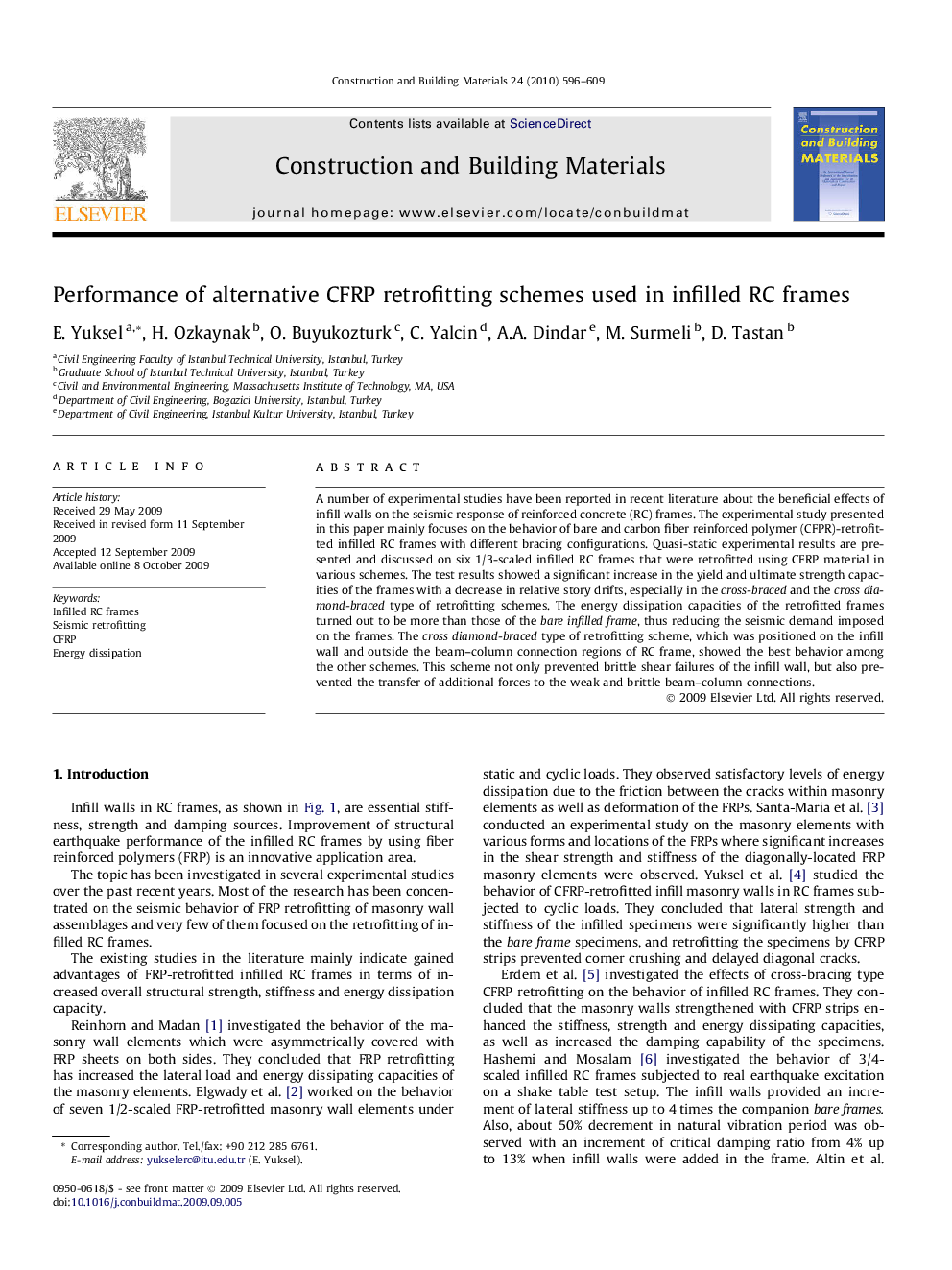| Article ID | Journal | Published Year | Pages | File Type |
|---|---|---|---|---|
| 260504 | Construction and Building Materials | 2010 | 14 Pages |
A number of experimental studies have been reported in recent literature about the beneficial effects of infill walls on the seismic response of reinforced concrete (RC) frames. The experimental study presented in this paper mainly focuses on the behavior of bare and carbon fiber reinforced polymer (CFPR)-retrofitted infilled RC frames with different bracing configurations. Quasi-static experimental results are presented and discussed on six 1/3-scaled infilled RC frames that were retrofitted using CFRP material in various schemes. The test results showed a significant increase in the yield and ultimate strength capacities of the frames with a decrease in relative story drifts, especially in the cross-braced and the cross diamond-braced type of retrofitting schemes. The energy dissipation capacities of the retrofitted frames turned out to be more than those of the bare infilled frame, thus reducing the seismic demand imposed on the frames. The cross diamond-braced type of retrofitting scheme, which was positioned on the infill wall and outside the beam–column connection regions of RC frame, showed the best behavior among the other schemes. This scheme not only prevented brittle shear failures of the infill wall, but also prevented the transfer of additional forces to the weak and brittle beam–column connections.
